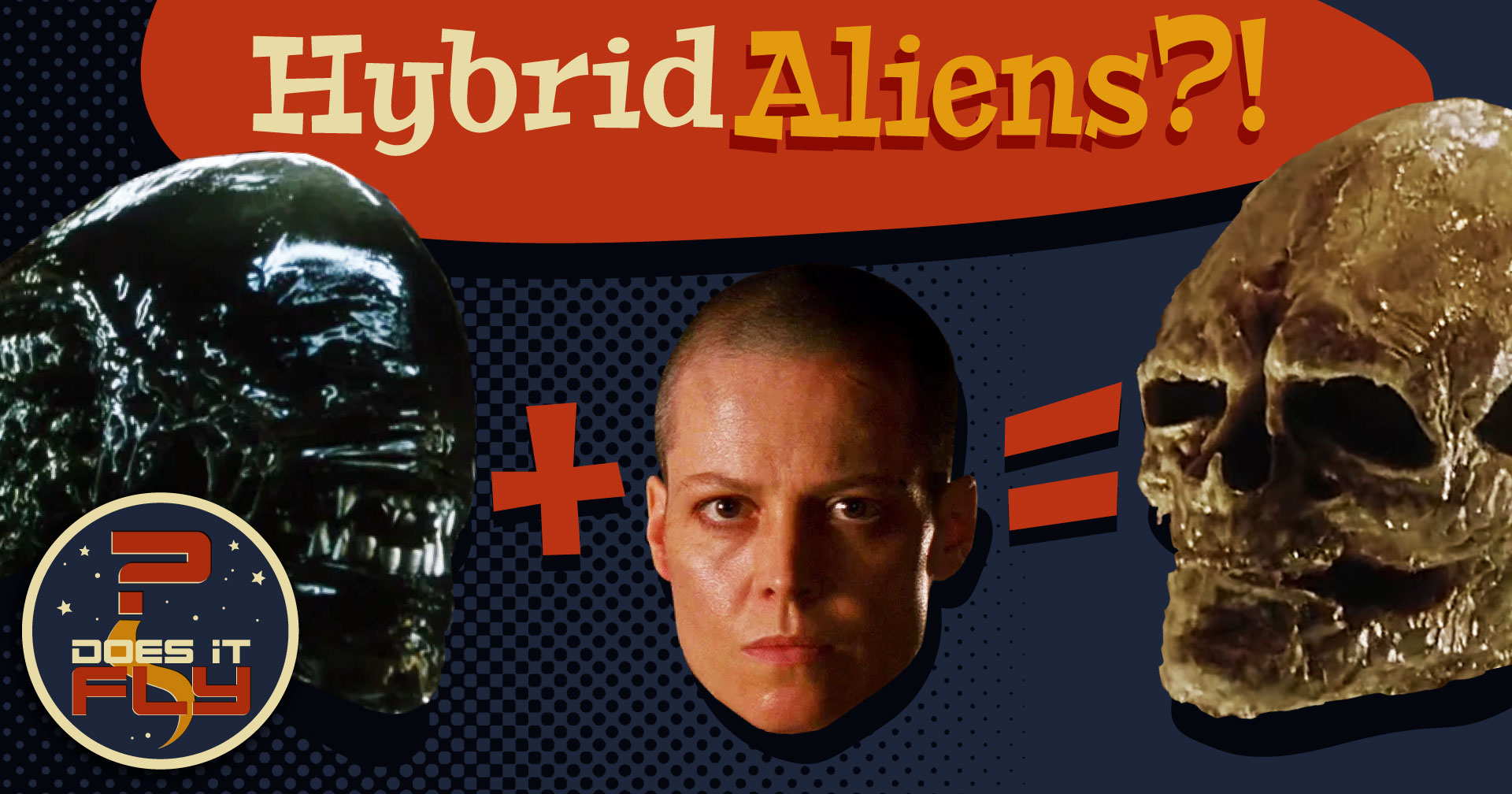Doctor Who: How Could a TARDIS Actually Work?
From black holes to reverse time acceleration and more, we look at the science, the fiction, and everything in between behind Doctor Who’s most iconic piece of technology, the TARDIS.
This episode of Does it Fly? is presented by ScreenUK. ScreenUK is a free discovery platform celebrating the very best of UK-produced film, television, animation and gaming and sharing it with audiences around the world. ScreenUK is the go-to place to discover your next favorite movie, show, or game and features tons of exclusive behind-the-scenes interviews and all the info you need to find out how and where to watch or play your newest obsessions, wherever you are in the world. Make ScreenUK.org your next stop.
It’s “time” (sorry) for a unique piece of sci-fi technology from the legendary Doctor Who! TARDIS stands for “Time and Relative Dimension in Space.” The Doctor is a Time Lord, from the planet Gallifrey, and a TARDIS is a technology that allows Time Lords to travel through space and time while having all manner of timey-wimey adventures. And yet, despite the name of our show, TARDISes do very little actual flying. They are designed to dematerialize and re-materialize in the desired place in space and time. Though there are episodes where audiences see the TARDIS doing what is more akin to traditional flying, doing that too often can damage them.
A typical TARDIS has a Chameleon Circuit that allows them to blend into their surroundings. The Doctor’s TARDIS has a rather unique shape as an old police phone box, but that’s not their standard form. Instead, the Doctor’s famous TARDIS got stuck this way while disguising itself as something commonplace using that Chameleon Circuit. They are also, perhaps most famously, bigger on the inside than they are on the outside (if this concept gives you a headache, don’t worry).
In this episode, Hakeem and Tamara examine just how feasible it is for the TARDIS to traverse both time and space in such a unique fashion as well as a number of its other unique features. In the process, they discuss some key episodes in Doctor Who history, as well as the scientific concepts that do (or don’t) power the TARDIS.
Watch it right here or on our YouTube page!
FURTHER READING
Hakeem and Tamara explored a number of concepts to try and figure out what makes the TARDIS tick in this episode. Here’s a few options if you want to dive a little deeper!
“There’s a lot of brilliant physicists who have been studying this for a very long time. When you study black holes, basically you’re studying the geometry of space-time. Black holes, not only are they bigger on the inside than the outside, but they grow continuously with time on the inside. So even if they shrink down and evaporate on the outside, the inside volume doesn’t change.”
“Armies have tried to get inside the TARDIS and they can’t, because it’s impenetrable. A white hole is a time-reversed black hole…Physicists…came up with this idea of a white hole…because they wanted to look at wormholes. How do you do interdimensional travel? They realized that if you have a time-reversed black hole, you form this thing called a white hole. So just like nothing can come out of a black hole, nothing can go into a white hole.
“Any physical process that’s not strictly forbidden from occurring by the laws of physics must occur. Unless the laws of physics say it can’t happen, it must happen.”
SUGGESTED VIEWING
Since the show has been around for 60 years, we get that jumping into Doctor Who can feel a little intimidating. And when you factor in the fact that the TARDIS has been there from the beginning and appears in pretty much every single episode, it can be downright overwhelming. So if you’re someone who’s always been curious about Doctor Who and just wondering where to start or a fan who wants to revisit the basics as well as some of the episodes we watched to get ready for this week’s discussion, allow us to point you at a few of our favorites.
For simplicity’s sake, we’re keeping our recommendations to the newer series that began in 2005, but if you’re ready to dive deeper, you can’t go wrong with Tom Baker’s long-running (and perhaps most iconic in the show’s history) run as the Doctor in the 1970s. But all series/season codes below begin with the 2005 version of the show and continue right up until the present day!
S1E1 “Rose”
The show that brought Doctor Who back to the airwaves is a perfect introduction to every important concept in the show’s lore!
S1E13 “The Parting of Ways”
S2E0 “The Christmas Invasion”
S2E1 “New Earth”
Want to get used to the concept of “regeneration” and why new actors who look drastically different always get to play essentially the same character? These three episodes will tell you what you need to know! And once you’ve gotten a better sense of Doctor Who lore, check out the 50th Anniversary Special, “The Day of the Doctor” to really have your mind blown!
S5E1 “The Eleventh Hour”
S6E4 “The Doctors Wife”
S7E11 “Journey to the Centre of the TARDIS”
Bring on the TARDIS! Each of these episodes will give you a better idea of what the TARDIS is capable of, its origins, and much more.
S3E10 “Blink”
Not only one of the best episodes in the show’s history, but one of the best hours of sci-fi television you may ever see (and one we discuss quite a bit here)! It also gave us this wonderful clip of the Doctor explaining how time works…in his own unique way. And on that note…
S2E12 “Army of Ghosts”
S2E13 “Doomsday”
S6E1 “The Impossible Astronaut”
S7E5 “The Angels Take Manhattan”
Each of these episodes deal with the rules of time travel within the Doctor Who universe, and specifically how paradoxes are created and why they should be avoided.
2023 Christmas Special “The Church on Ruby Road”
Let’s bring it full circle, shall we? Just as it was with “Rose” in 2005, Ncuti Gatwa’s first full adventure as the Doctor will tell you everything you need to know about the character if you want to get in on the ground floor!
FOLLOW US!
Stay in the loop! Follow DoesItFly? on YouTube and TikTok and let us know what you think!
And don’t forget to follow Roddenberry Entertainment:
Instagram: @RoddenberryOfficial
Facebook: Roddenberry
Twitter: @Roddenberry
For Advertising Inquiries: doesitfly@roddenberry.com
*Roddenberry Entertainment participates in affiliate programs and may receive a small commission for links on this page.*
MORE EPISODES

The Most Infamous Scene in the Indiana Jones Movies Explained
When people think of Indiana Jones and the Temple of Doom, they tend to go straight to the infamous moment when a man’s still-beating heart is torn from his chest. We’re taking a look into the specifics…and the possibilities…of heart-ripping.

The Evolutionary Case for Real Dragons
How to Train Your Dragon is only the latest piece in a cultural puzzle that dates back thousands of years. How realistic are dragons, anyway?

The Science of a Controversial Alien Franchise Moment
The human/Xenomorph hybrid in Alien Resurrection remains one of the most controversial moments in the history of the franchise. We’re taking a look at what does and doesn’t work about this wild sci-fi movie concept.


